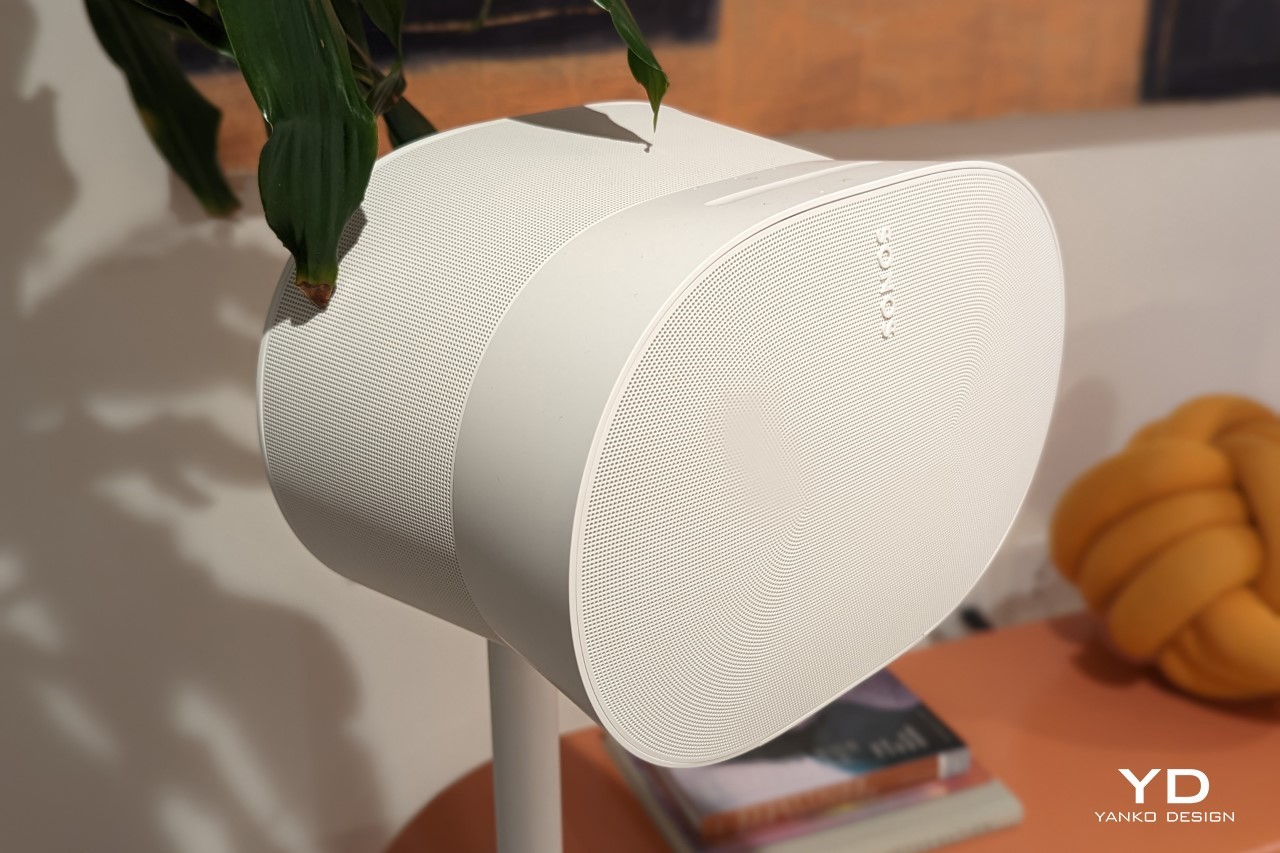
The Sonos Era 300, along with its smaller sibling, the Era 100, packs massive sound in a small package. While the Era 100 serves as an upgrade to the Sonos One in size, hardware, and sound, the Era 300 is the Sonos’ “breakthrough spatial audio speaker”, with drivers that fire audio in every conceivable direction (including even upward) to turn any room into a concert hall. “With next-level audio that hits from every direction, Sonos Era 300 doesn’t just surround you, it puts you inside your music”, say the folks at Sonos.
Designer: Sonos
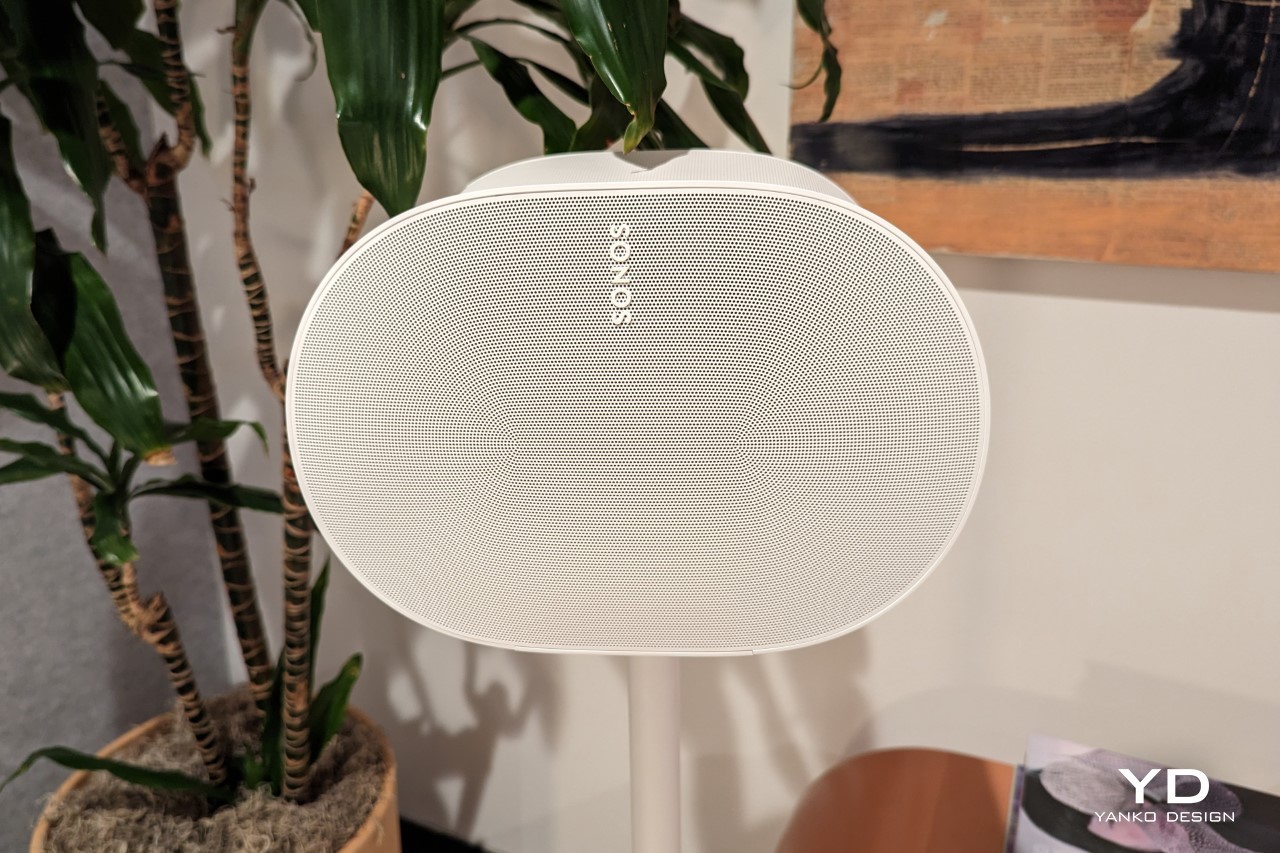
The Era 300 is Sonos’ open challenge to Apple’s Spatial Audio. Its hourglass-shaped design hides four tweeters that direct sound left, right, forward, as well as upward. This unique architecture helps efficiently utilize the space the speaker is located in, with that cleverly engineered upward tweeter using the ceiling as a bouncing board to create that spatial audio experience. Along with the four tweeters are two woofers that provide a rich creamy layer of bass, and custom waveguides that enhance audio dispersion for an expansive soundstage.
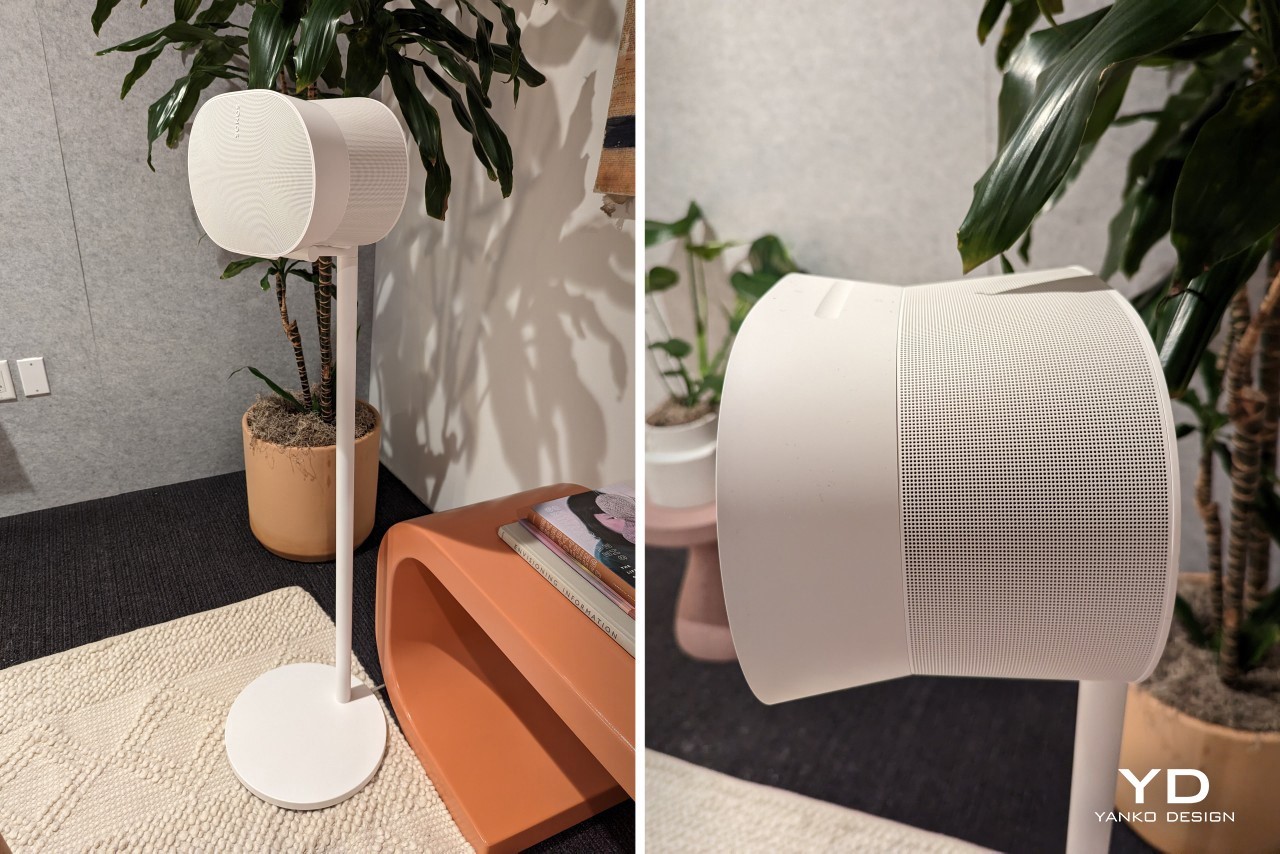
Sonos currently supports Dolby Atmos Music via Amazon Music Unlimited for the Spatial Audio experience.
While designed to work remarkably as a solo unit, the Era 300 delivers a much more hypnotic multichannel experience when two are paired as a stereo home theater setup. Movie fans can connect two speakers with Arc or Beam (Gen 2) for a hyperrealistic 7.1.4 Dolby Atmos sound experience that’s greater than the sum of its parts.

The Era 300 boasts WiFi connectivity to let you stream the highest-quality audio formats (including Dolby Atmos via Amazon Music) from anywhere in your home without any interruptions. The speaker works with all popular music streaming apps, with support for AirPlay 2, and even has Sonos Voice Control for controlling playback via your voice. For the more traditionally-minded, however, there’s Bluetooth connectivity, and a USB-C line-out that lets you connect your speaker to a turntable or any other wired source (via the Sonos Line-In Adapter).
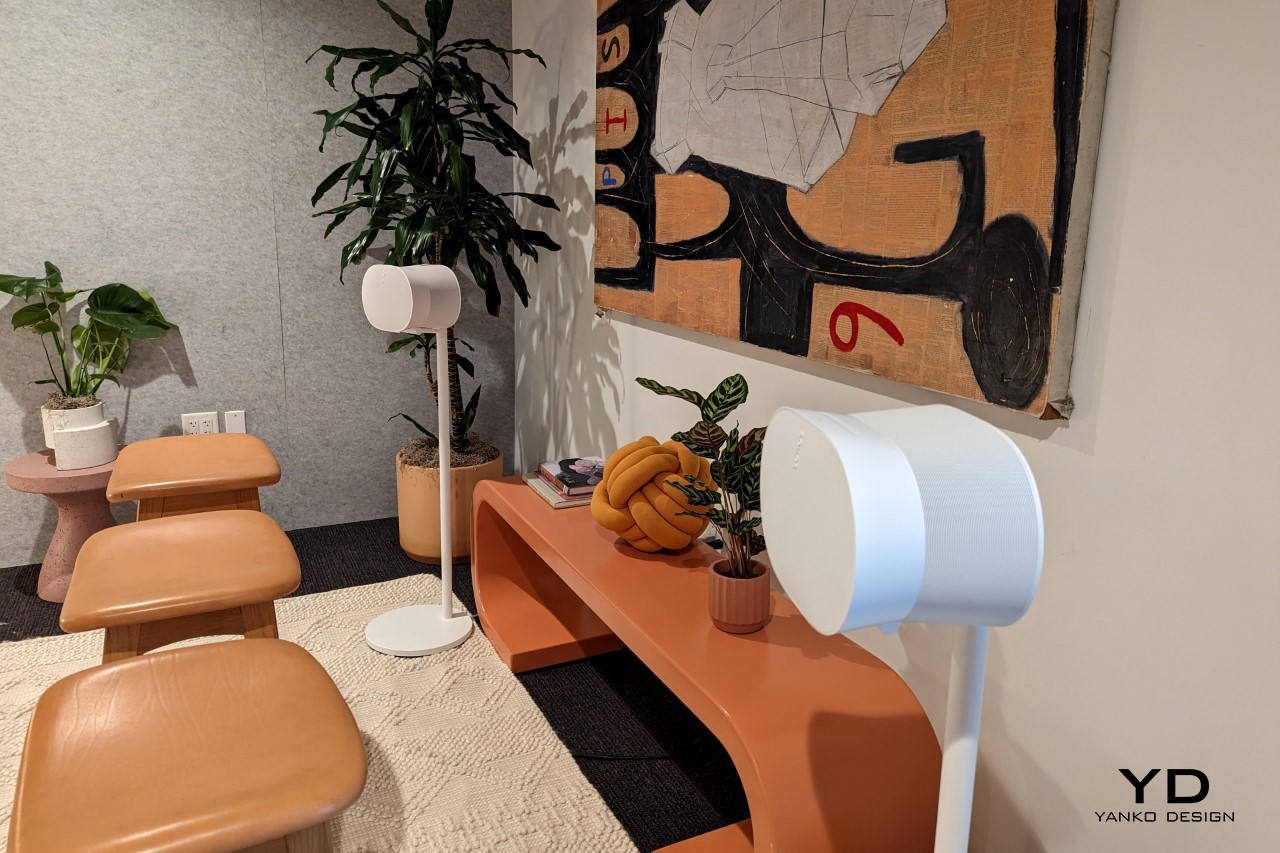
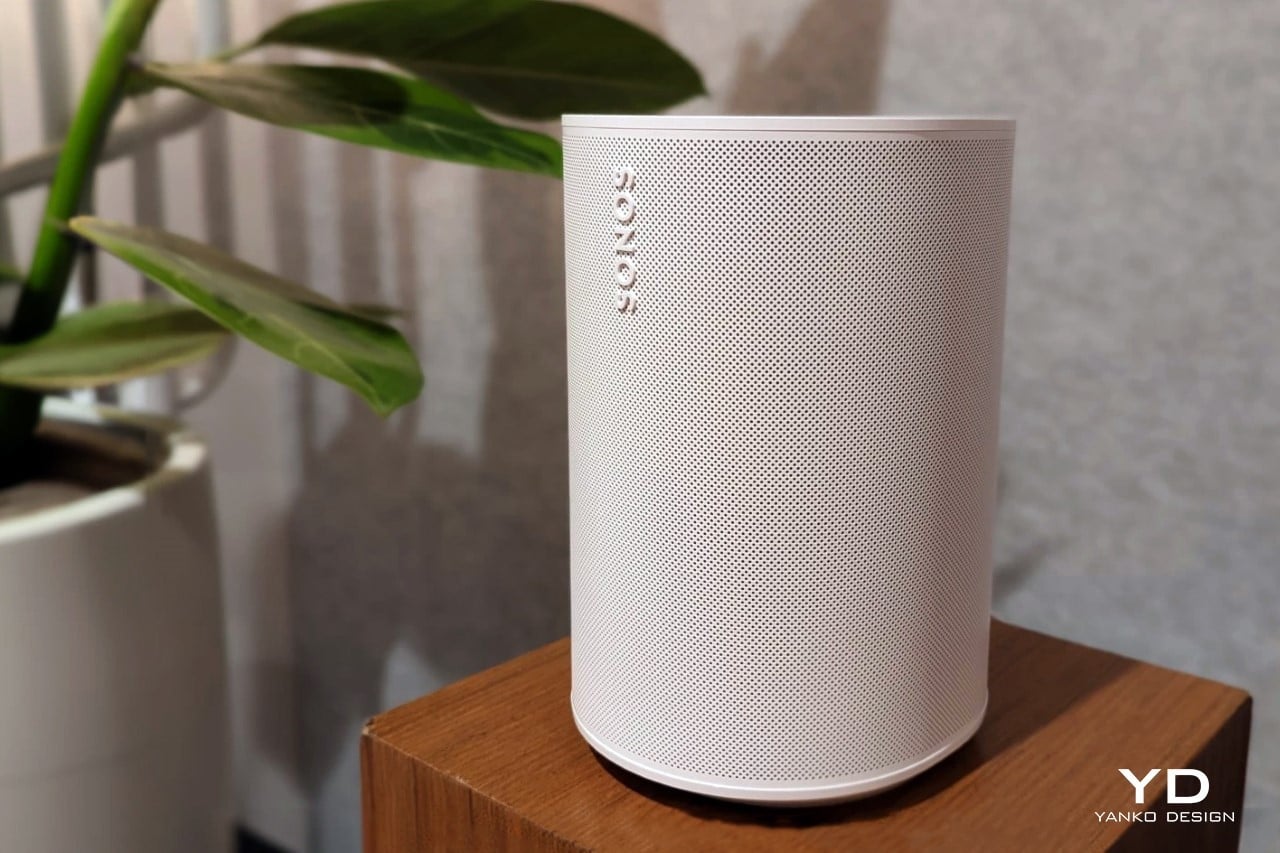
Touted as the next-gen smart speaker, the Era 100 is the smaller of the two new speakers from Sonos. Designed as a visual and performance upgrade to the Sonos One, it sports a similar size but with a cylindrical profile, and boasts a dual-tweeter array that produces a detailed stereo separation, along with a significantly larger midwoofer for a richer bass. Unlike the One, the Era 100 has Bluetooth connectivity, along with a USB-C line-in that lets you connect wired sources to your speaker.
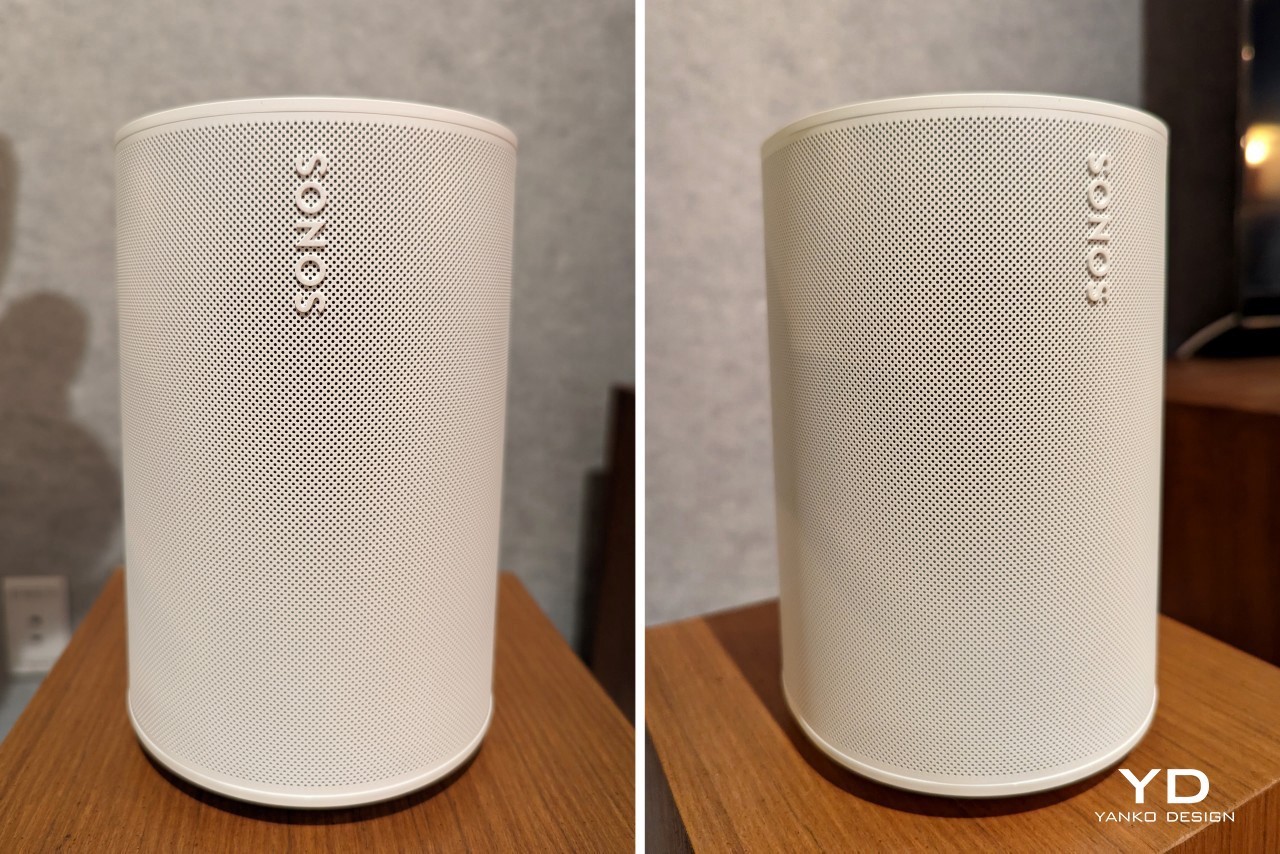
The Era 100 doesn’t have Spatial Audio like its larger sibling, notably because it doesn’t possess an upward-firing tweeter. Instead, the Era 100 provides detailed stereo sound thanks to two angled tweeters and custom waveguides that amplify the dispersion of sound waves to create a wider soundstage. Its upper surface houses the familiar dimpled control panel that lets you control and configure playback.
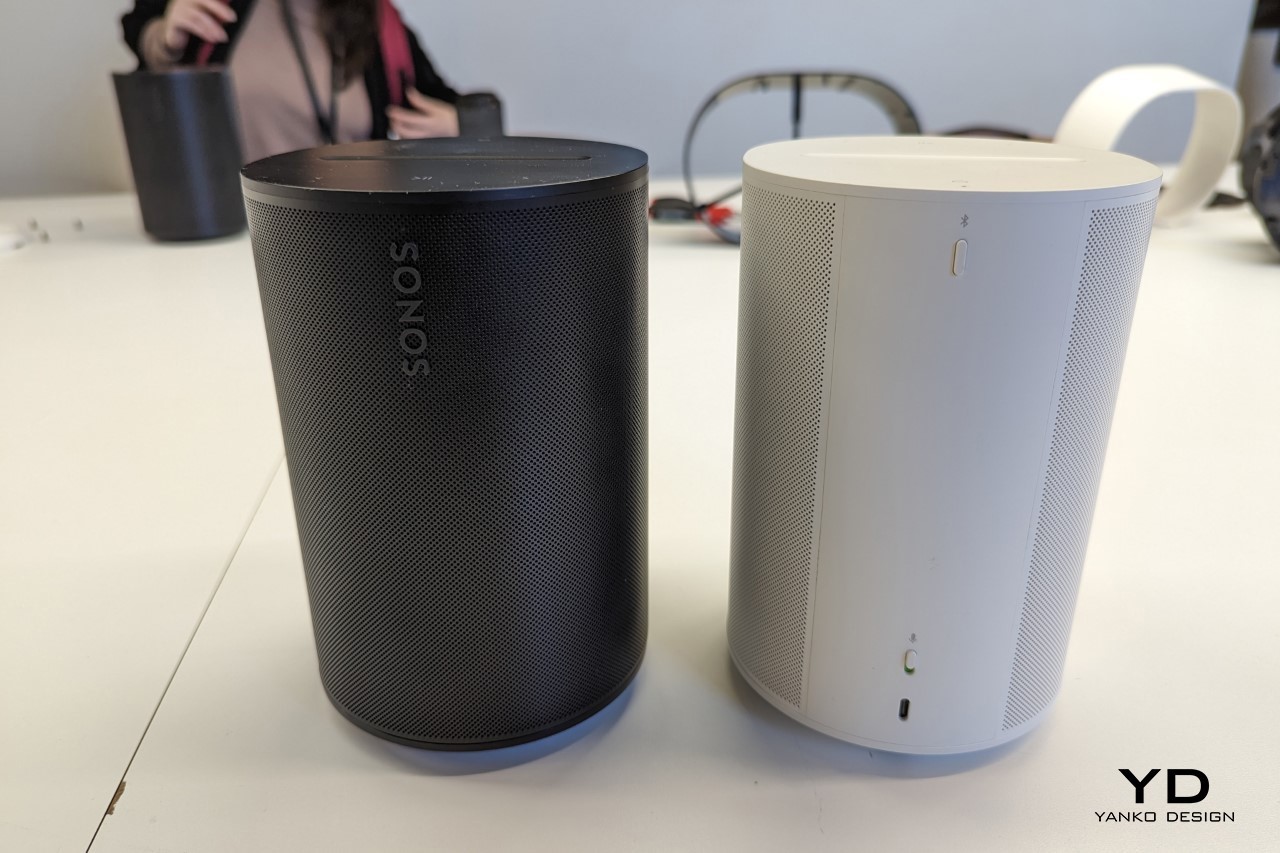
The Era 100 also boasts WiFi connectivity along with support for Bluetooth, AirPlay 2, and wired audio. You can also play music and manage your system hands-free and privately with Sonos Voice Control.
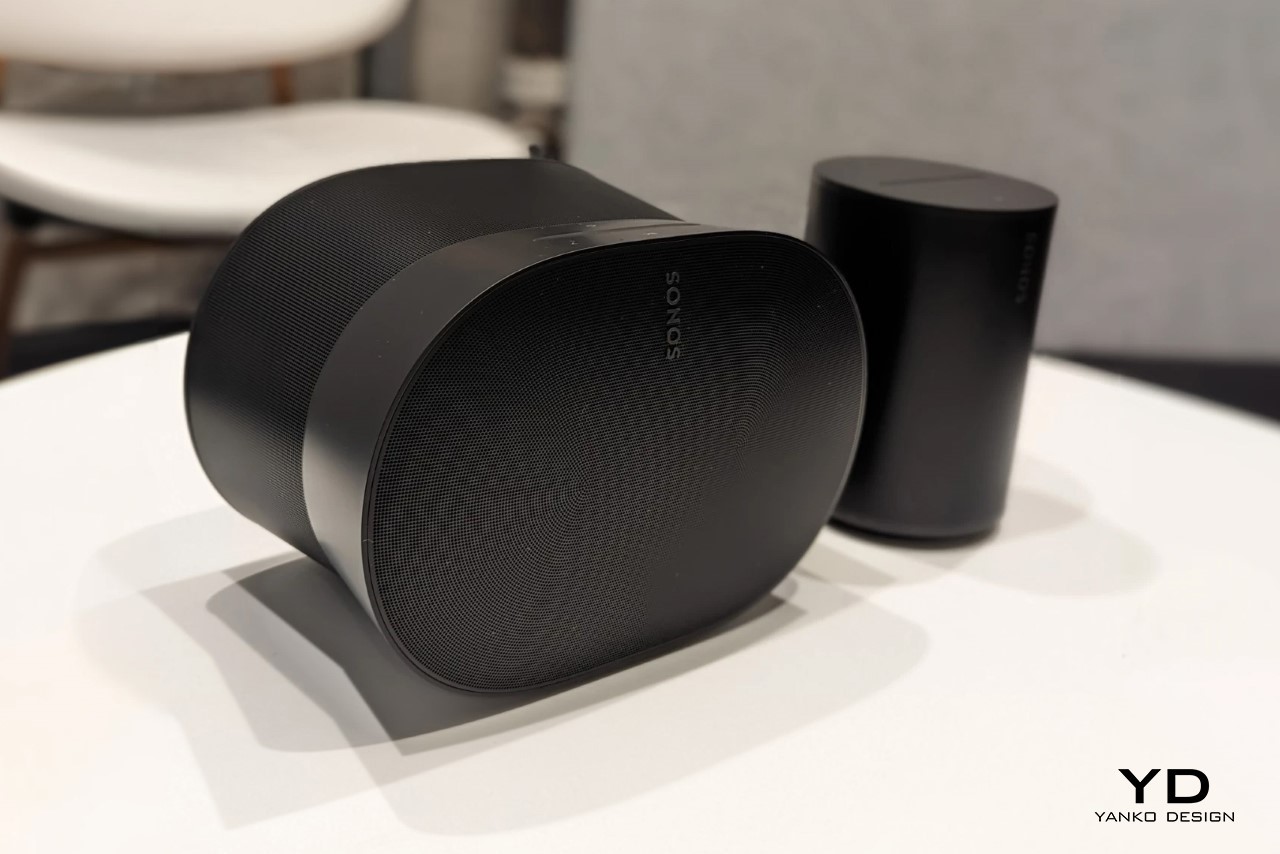
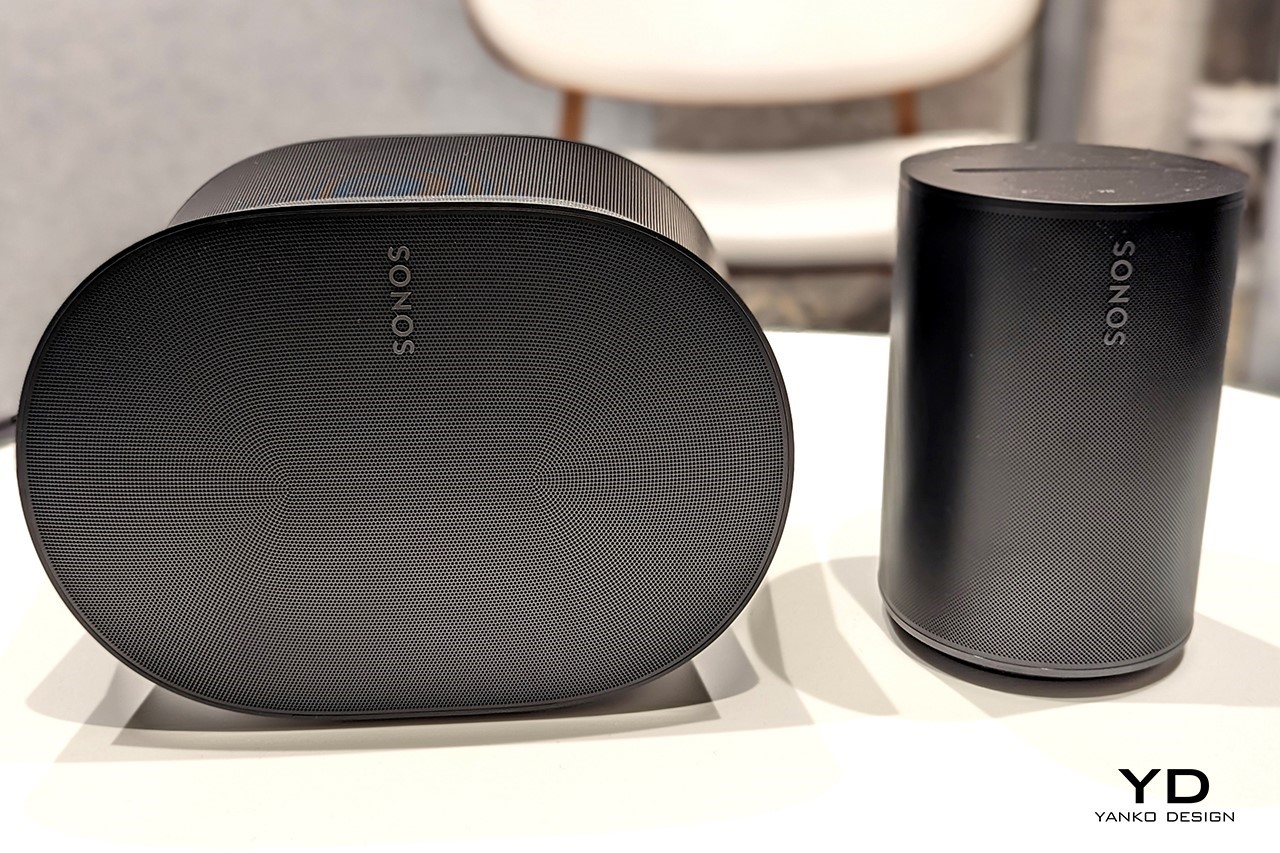
Setting up both the Era 100 and Era 300 is simple, thanks to the Trueplay app that measures the acoustics of your room and then fine-tunes the EQ of your speaker to deliver the best audio quality for your space. For more custom controls, the Sonos app lets you manually adjust bass, treble, and loudness to suit your personal needs.
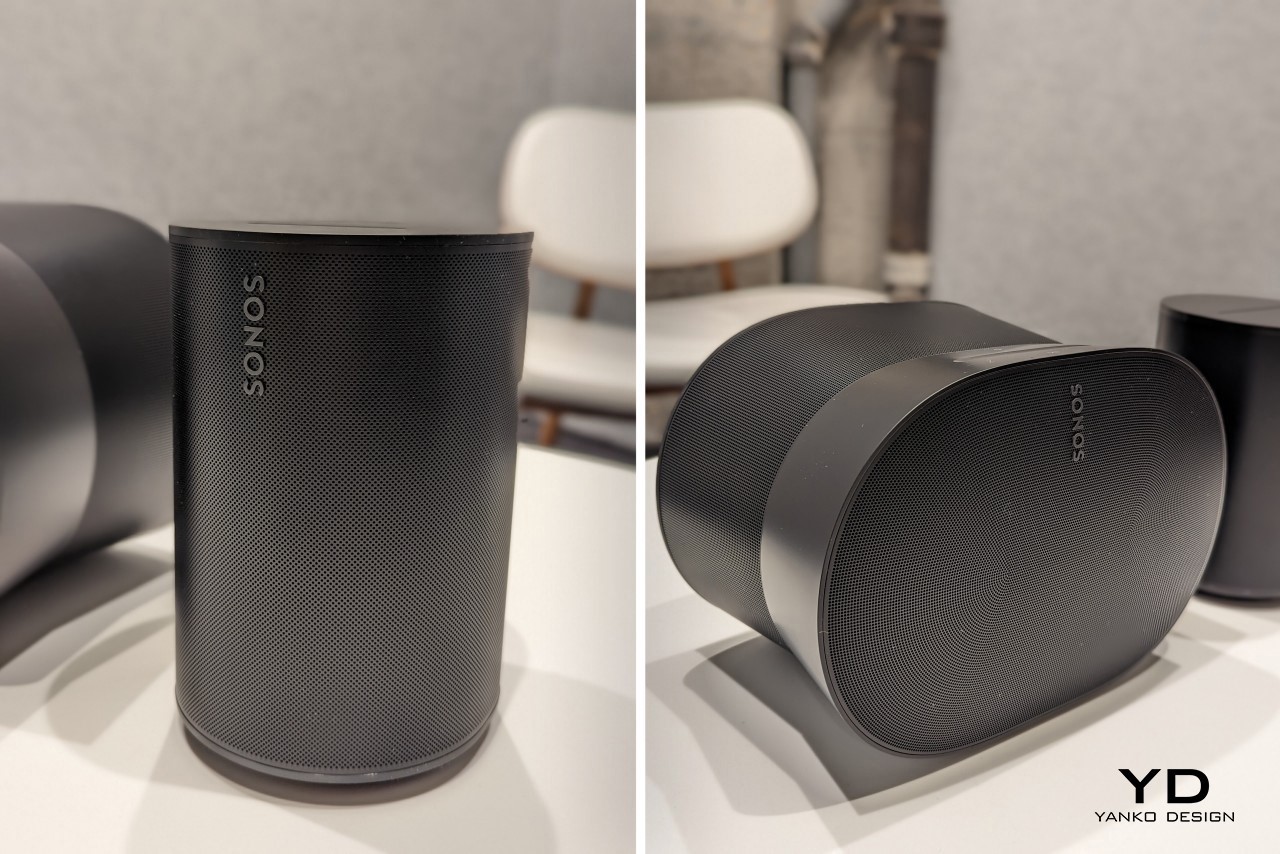
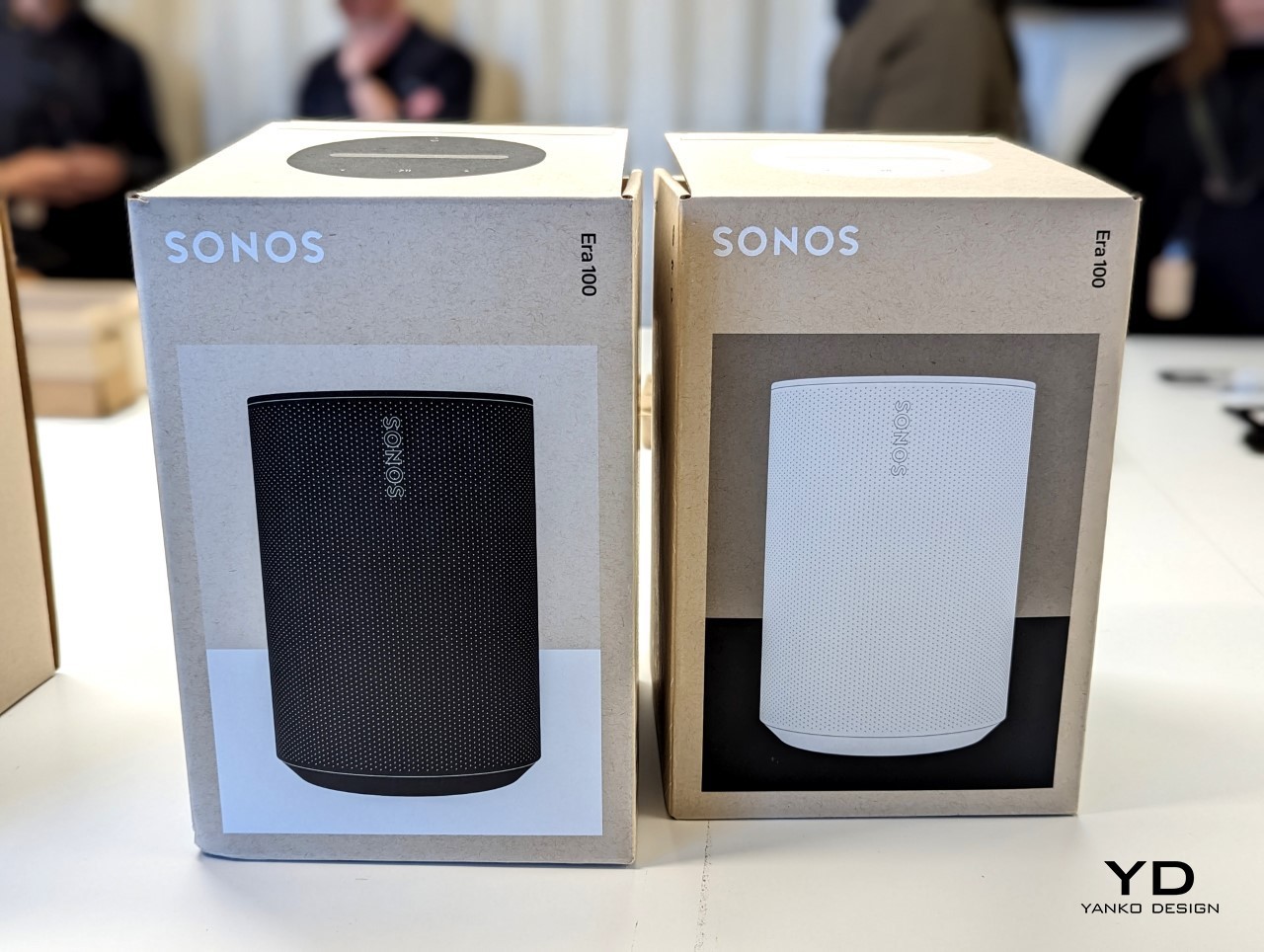
Both the Era 100 and Era 300 are made with post-consumer recycled (PCR) plastic and packaged in 100% sustainably sourced paper, while highlighting a design that’s built for serviceability by reducing the use of adhesives and transitioning to screws for easy disassembly and repair.
Available starting March 28th, 2023, the Sonos Era 100 is priced at $249, and the Era 300 sports a price tag of $449.
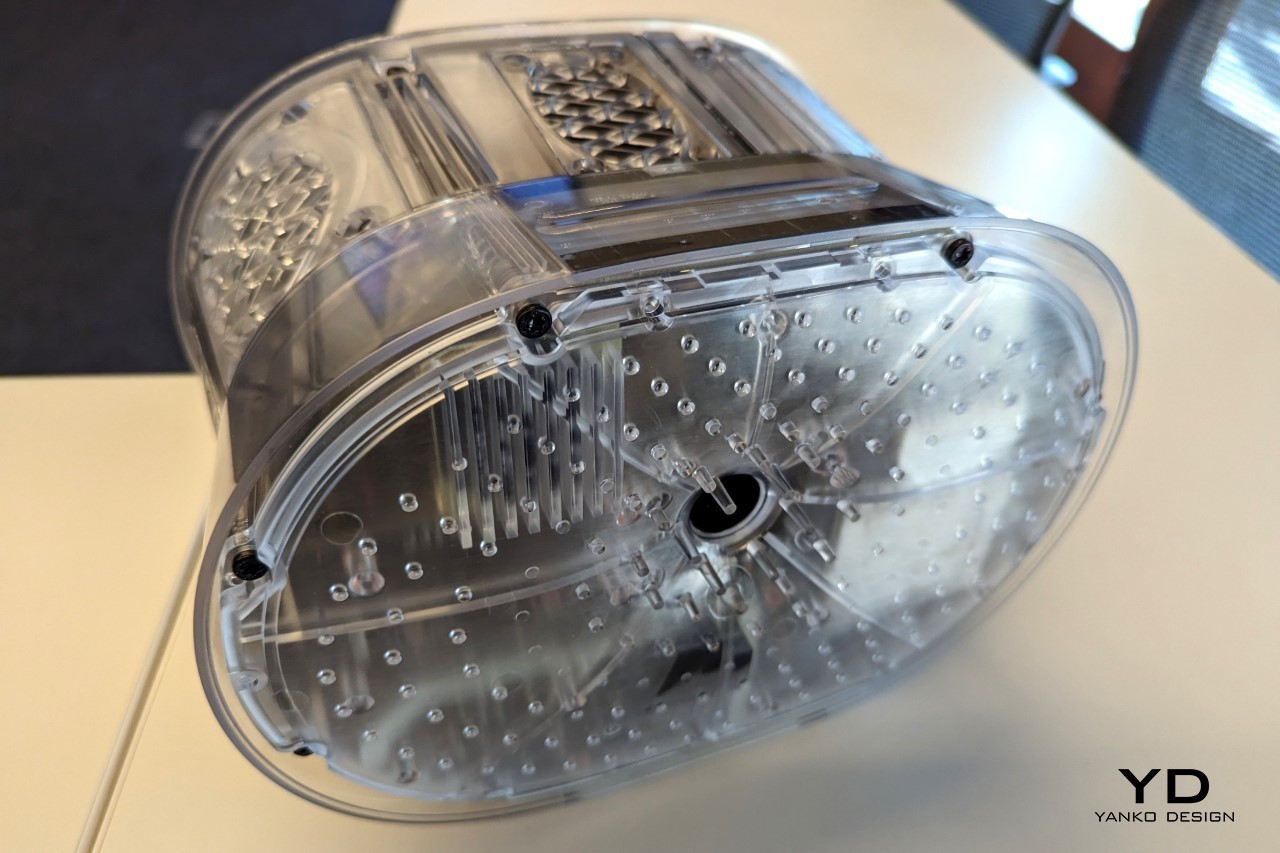
A look at the Sonos Era 300 through a transparent outer body
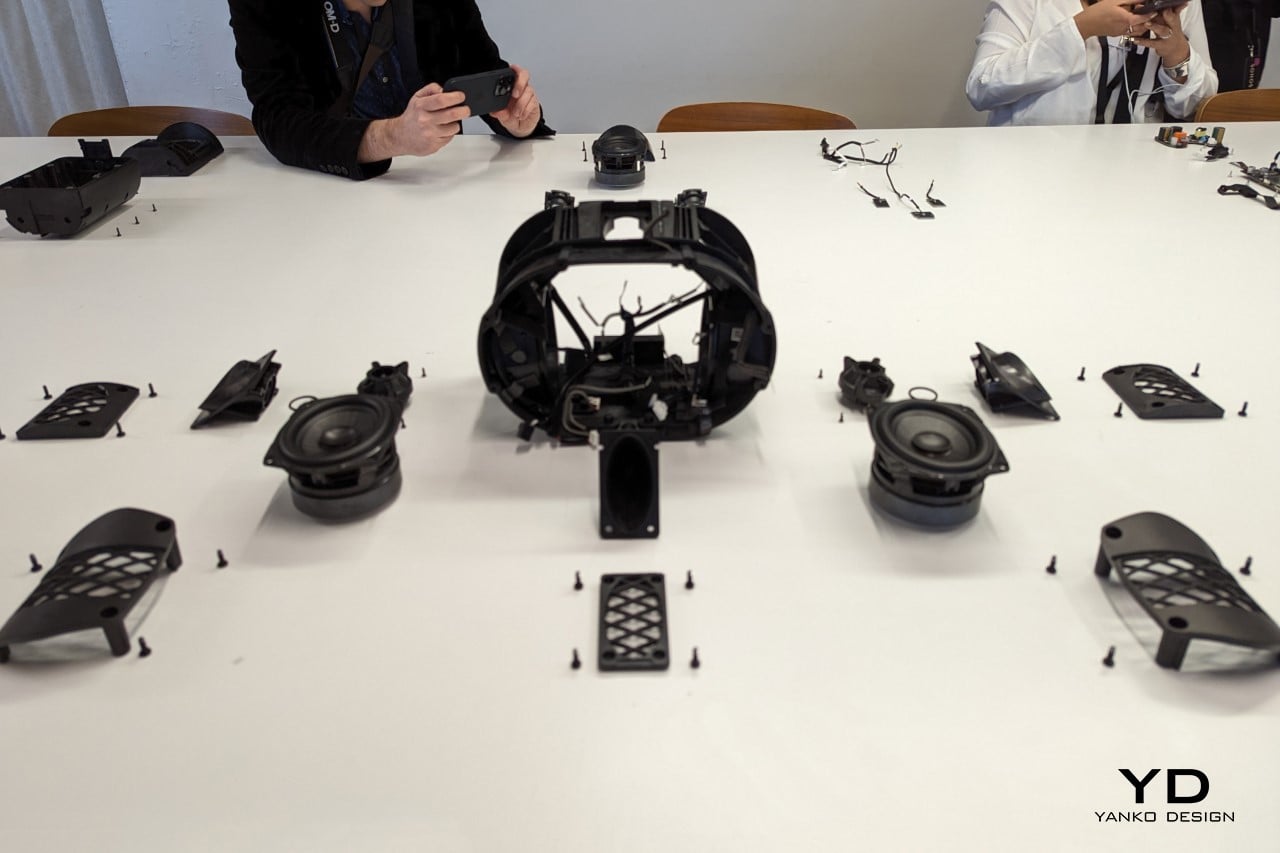
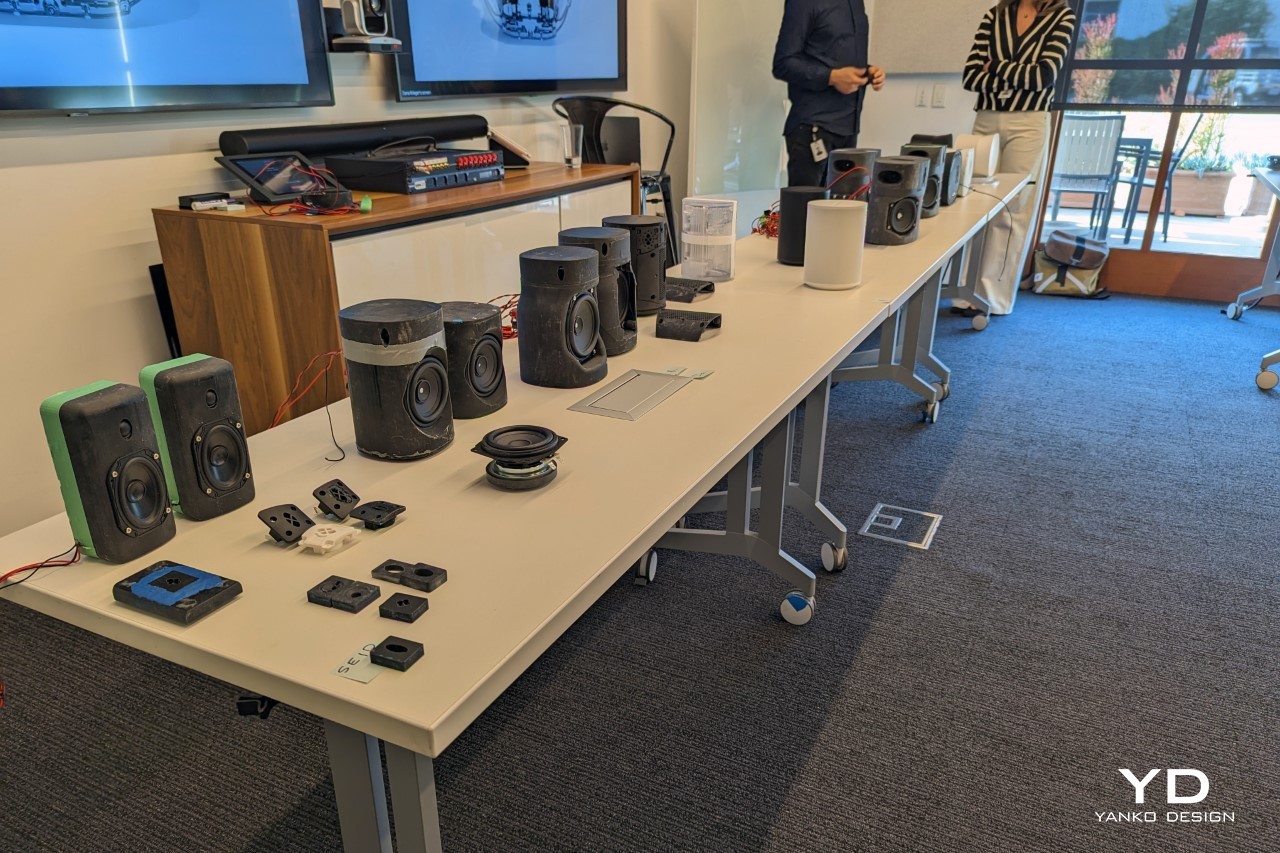
The post The Sonos Era 300 with six drivers and Dolby Atmos challenge Apple in their ‘spatial audio’ battleground first appeared on Yanko Design.








